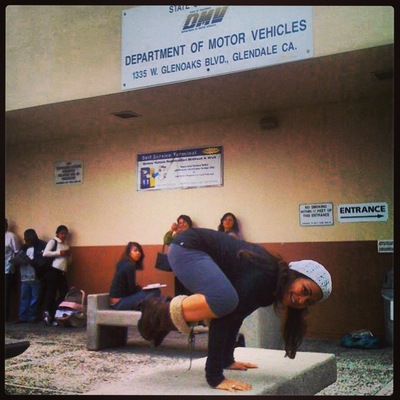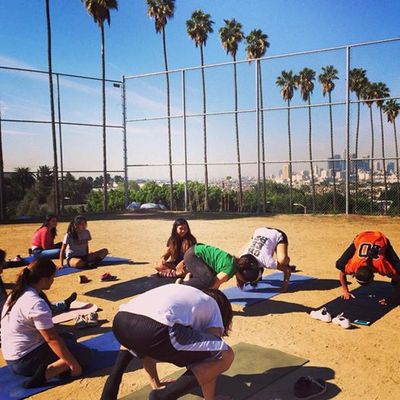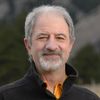 This is an interview with Lupé Carranza, who currently teaches at Yoga@LEMA, a free community yoga class located in the Lincoln Heights area of Los Angeles. Yoga@LEMA began as a class for the parents of Leadership in Entertainment and Media Arts High School (LEMA). Its founder, Marlene McCurtis, soon realized the need open it up to the community at large. Lincoln Heights is a largely immigrant community of mostly Latinos and Vietnamese. It has one of the highest poverty rates in Los Angeles. Combined with gang violence, fear of deportation, family addiction, and abuse, it is what Marlene McCurtis calls a "yoga desert."
This is an interview with Lupé Carranza, who currently teaches at Yoga@LEMA, a free community yoga class located in the Lincoln Heights area of Los Angeles. Yoga@LEMA began as a class for the parents of Leadership in Entertainment and Media Arts High School (LEMA). Its founder, Marlene McCurtis, soon realized the need open it up to the community at large. Lincoln Heights is a largely immigrant community of mostly Latinos and Vietnamese. It has one of the highest poverty rates in Los Angeles. Combined with gang violence, fear of deportation, family addiction, and abuse, it is what Marlene McCurtis calls a "yoga desert."
Rob: Tell me how you got started.
Lupe: Marlene and I met at a training workshop, where she shared her vision of bringing bi-lingual yoga classes to her husband's high school community. What she talked about really interested me. As a Latina I have a direct connection to this community. We shared the vision of bringing yoga to underserved communities, particularly in LA, where so much yoga is readily available, yet out of reach for so many.
How did the program develop from those first ideas?
Jose Alvarado, another yoga teacher and friend, and I, began providing free weekly bi-lingual community yoga classes in a converted classroom at LEMA in August 2013. As Yoga@LEMA grew, we partnered with community entrepreneur and kindred spirit Esmeralda Sanchez who had just realized her dream of opening a Zumba studio in the community. She generously offered us free time at her studio, conveniently located across the street from LEMA.
In February 2014, we expanded the program again. We began teaching yoga to 9th and 10th graders as part of the P.E. class at LEMA. We have recently formed a partnership with an elementary school to bring yoga into south central Los Angeles.
What originally motivated you to do yoga service, and what continues to motivate you?
After my very first yoga class at Mark Blanchard's Power Yoga, I remember wishing I had known about this as a child. I knew that if I had, I would have never forgotten how special, unique, and awesome I am. I believe in sharing this with people who have forgotten how good they really are. We are all dealing with layers of shame that we are buried under in one way or another. Yoga is one way to help lift our spirits and remind us of the good inside. It's something that, once learned, is a gift or tool we can use for ourselves, no matter where we are in life.
How, if at all, has that motivation changed over time?
It has gotten deeper, and created an ongoing desire in me to learn even more, so that I have even more to share.
Is there a standout moment from your work with recovering addicts?
There was a moment when we were interviewing the mothers of the LEMA high school kids that we teach, when one mother said her kids even notice a difference in how she relates to them. They say, "Mom, you need to keep doing yoga."
What did you know about the population you are working with, before you began teaching?
The only thing I knew was that they were people just like me, who have gone through different life experiences, and hadn't been exposed to yoga. "Under-served community" is a label I hear quite often. We also knew that their first language is Spanish. What I know for sure is that yoga in any form helps bring about awareness of one's self and helps you heal your spirit/soul/heart.
What are two distinct ways that your teaching style differs from the way you might teach in a studio, and what are the reasons for these differences?
1. My teaching style doesn't change, but the main difference is this class is free to the community for anyone who desires to learn. Yoga@LEMA funds it. It provides the mats, blocks, straps and teachers.
2. The second difference is that it is a bilingual class that is taught in a Zumba studio, so that adds a little pop of color.
What has been the greatest challenge in your teaching experience, and what tools have you developed for addressing that challenge?
 The greatest challenge is helping people realize that yoga isn't a religion, and that it isn't only for flexible people. I've had some female students tell me that their husbands don't really like them coming to yoga. Some stop coming, and some just tell their husbands they are doing something else. Also one of our LEMA moms was deported this year. The tools we use include listening to their concerns with an open mind, and offering them ideas and ways to experience yoga in a generic and inspiring way. Also, we recently received a gift of 20 blocks and straps from YogaRat, and that lessened their concern of not being flexible enough.
The greatest challenge is helping people realize that yoga isn't a religion, and that it isn't only for flexible people. I've had some female students tell me that their husbands don't really like them coming to yoga. Some stop coming, and some just tell their husbands they are doing something else. Also one of our LEMA moms was deported this year. The tools we use include listening to their concerns with an open mind, and offering them ideas and ways to experience yoga in a generic and inspiring way. Also, we recently received a gift of 20 blocks and straps from YogaRat, and that lessened their concern of not being flexible enough.
What advice would you give to anyone who is going to teach yoga to people in recovery from addictions?
My advice would be to just come with an open mind, be compassionate, have an open heart, and know that everyone has their own divine timing for healing and learning.
What are some of your ideas about, or hopes for, the future of "service yoga" in America in the next decade?
That it not be labeled "service yoga." We are all here to help each other, serve one another to be the best we can be, and in turn create a better world to live in. I hope that yoga in general be recognized even more as a way to better health, and that it be affordable for ALL.
Editor: Alice Trembour
Stay connected with Give Back Yoga Foundation as we share the gift of yoga with the world, one person at a time, by following us on Facebook, Twitter and Google+ and by subscribing to our newsletter.
Are you a yoga instructor giving back to underserved populations? E-mail Executive Director Rob Schware if you're interested in being interviewed for this series.
